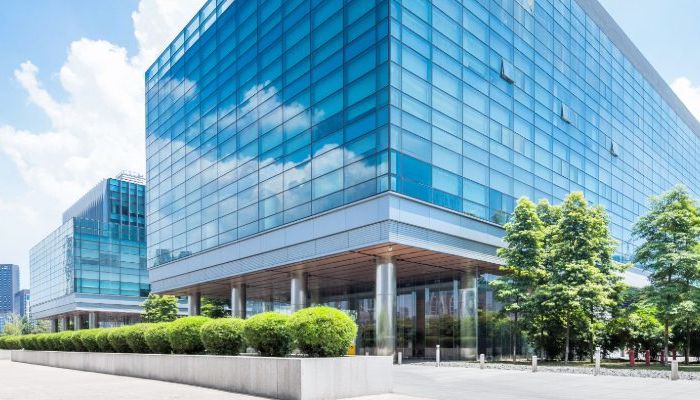Facility management audits are a crucial tool for businesses. They help identify inefficiencies and potential cost savings.
But what exactly is a facility management audit?
It’s a comprehensive review of a facility’s operations. This includes everything from maintenance and safety protocols to energy efficiency and space utilization.
The goal? To ensure optimal performance and compliance with regulations.
But the benefits don’t stop there.
A well-conducted facility management audit can uncover thousands in savings. It can reveal hidden costs and operational inefficiencies that, once addressed, can significantly reduce expenses.
This article will guide you through the process of a facility management audit. It will highlight how it can help in risk assessment, ensure compliance, and ultimately lead to cost reductions.
So, whether you’re a facility manager, a business owner, or a property management professional, this guide is for you. Let’s dive in and uncover the potential savings hidden in your facility.
Understanding Facility Management Audits
Facility management audits are comprehensive evaluations. They assess everything from building infrastructure to operational processes. Through these audits, businesses identify areas for improvement and cost savings.
Typically, a facility management audit involves a thorough inspection. The inspection covers key systems such as HVAC, lighting, and plumbing. Evaluating these systems helps ensure they operate efficiently and within regulatory guidelines.
A crucial aspect of these audits is risk assessment. It aims to identify potential hazards that could affect safety and compliance. Addressing these risks early can prevent costly liabilities down the line.
Another focus is compliance review. This ensures that all operations adhere to relevant laws and regulations. Non-compliance can result in hefty fines or legal penalties, which audits can help avoid.
Operational efficiency is a key area of interest. Audits examine current practices to spot inefficiencies in processes and maintenance schedules. Optimizing these areas can lead to significant cost reductions and improved performance.
Lastly, a facility management audit often includes space utilization analysis. Understanding how space is used enables better planning and can lead to strategic adjustments. This not only maximizes resource allocation but can also enhance employee or tenant satisfaction.
The Audit Process: A Step-by-Step Guide
Conducting a successful facility management audit involves several crucial steps. Each step plays a role in uncovering hidden savings and ensuring operational excellence. Understanding these steps can help facility managers and business owners optimize their operations efficiently.
Begin by defining the scope of the audit. Determine which areas of the facility will be included. This ensures no part of the facility is overlooked and all significant components are assessed.
Next, assemble your audit team. The team should include individuals with a range of expertise. Diverse perspectives help identify areas for improvement that may otherwise be missed.
Collect and organize necessary documentation. This includes maintenance records, operational procedures, and compliance certificates. Having these documents ready facilitates a smoother auditing process.
A crucial step in the audit process is performing physical inspections. Physically examining equipment and facilities reveals insights that paperwork alone cannot. Look for physical signs of wear and inefficiency that might not be recorded.
After gathering data, the next step is to analyze it thoroughly. This analysis identifies trends and irregularities. Discrepancies between expected and actual performance often highlight opportunities for improvement.
Compile the findings into a comprehensive report. This report should clearly outline the issues discovered and provide detailed recommendations. Having clear documentation aids in making informed decisions on next steps.
Prepare to present your findings to stakeholders. An organized presentation helps secure their buy-in for suggested changes. Clear communication of potential savings and improvements encourages support for implementation.
Finally, develop a follow-up schedule to ensure findings are addressed. Regular reviews maintain accountability and track progress. This step ensures that improvements are sustained and objectives are met.
Preparing for the Audit
Before the audit begins, initial preparations are crucial. Establish clear objectives for the audit process. Knowing what you aim to achieve helps guide the assessment effectively.
Communication is another vital step. Inform all facility personnel about the upcoming audit. Their cooperation and awareness can ease the audit process and provide valuable on-the-ground insights.
Ensure that all documentation is current. Up-to-date records and manuals can prevent delays during the audit. Accurate documentation also serves as a reference point for evaluating system performance and compliance.
Conducting the Audit: Key Areas of Focus
- When conducting the audit, it’s critical to focus on core facility systems. Start with HVAC systems, as these often account for significant energy use. Regular maintenance checks and efficiency evaluations can lead to notable savings.
- Next, examine lighting systems. Upgrading to LED lighting or implementing smart controls reduces energy consumption. This change can significantly slash electricity bills.
- Plumbing systems are another focal point. Inspect for leaks and inefficiencies, which often translate to unnecessary costs. Simple fixes here can result in substantial water and energy savings.
- Energy audits play a vital role in understanding consumption patterns. Identifying high-usage periods and equipment helps in strategizing reductions. Energy management initiatives spring from these findings.
- Safety protocols must be evaluated, too. Ensure that all safety systems are functional and compliant. Addressing gaps in safety measures not only protects employees but also avoids potential fines.
- Finally, review space utilization. Determine if spaces are being used to their fullest potential. Repurposing underutilized areas improves both efficiency and employee satisfaction.
Analyzing Audit Findings
Once the audit is complete, focus shifts to analyzing the findings. Start by comparing current practices with industry standards. This comparison identifies where performance lags and highlights improvement opportunities.
Look for patterns in energy consumption or maintenance issues. These patterns can point to systemic inefficiencies. Targeting such problems can lead to long-term savings and operational improvements.
Prioritize findings based on urgency and impact. Not all issues require immediate attention, but high-impact items should be addressed first. This approach ensures resources are allocated effectively and improvements are actionable.
Summarize findings in a detailed report. The report should be clear and concise, outlining both issues and proposed solutions. Compelling evidence presented well facilitates buy-in from decision-makers and stakeholders.
Developing and Implementing an Action Plan
With the findings in hand, it’s time to develop an action plan. This plan should outline specific steps for addressing audit findings. Breaking actions into manageable tasks simplifies execution and tracking.
Assign responsibility for each task to specific team members. Clear ownership ensures accountability and progress. It also fosters teamwork and engagement among facility staff.
Finally, establish timelines for each action item. Realistic deadlines help maintain momentum and track progress. This structured approach ensures continuous improvement and long-term success.
Risk Assessment: Identifying and Mitigating Hazards
Risk assessment is a key aspect of a facility management audit. It involves identifying potential hazards that could disrupt operations. Failing to recognize these risks can lead to unexpected expenses and safety incidents.
Begin by identifying all possible sources of risk within the facility. These can range from physical hazards like faulty equipment to environmental risks such as extreme weather. Each facility will have unique risks depending on its specific operations and location.
Once risks are identified, the next step is evaluating their likelihood and impact. Understanding which risks are most probable and their potential severity helps in prioritizing them. This evaluation ensures that the most critical issues are addressed promptly.
After assessing the risks, develop a mitigation strategy. This strategy should outline preventive measures and emergency responses. Having a comprehensive plan in place minimizes disruptions and protects both people and assets.
Lastly, ensure regular updates and reviews of your risk management plan. Facilities and risks change over time, so the plan must be dynamic. Keeping it current enhances its effectiveness and ensures ongoing compliance with safety standards.
Compliance Review: Ensuring Regulatory Adherence
Compliance review is vital for verifying regulatory adherence in facility management. Meeting legal standards helps avoid costly fines and operational disruptions. It ensures that your facility aligns with both local and national regulations.
Begin by reviewing all applicable regulations for your facility. This might include safety codes, environmental regulations, and industry-specific requirements. Knowing what laws and standards apply is the first step in maintaining compliance.
Next, assess your current practices against these regulations. Identify any gaps where your facility might fall short. Pay special attention to areas like waste management, fire safety, and occupational health standards.
Once you’ve identified compliance gaps, take corrective actions to address them. Implement necessary changes in policies or procedures to meet regulatory demands. Regular training for staff can also ensure ongoing compliance, particularly when regulations evolve.
Documentation is a crucial component of a compliance review. Keep detailed records of audits, inspections, and changes made for compliance purposes. These documents provide proof of compliance and can be invaluable during regulatory inspections or audits. Being proactive in compliance review protects the facility from legal risks and promotes a safe working environment for all.
Cost Savings: Uncovering Inefficiencies and Reducing Expenses
Facility management audits are instrumental in uncovering inefficiencies. By identifying areas where resources aren’t utilized optimally, significant cost savings can be achieved. These audits help spotlight wasteful practices that might otherwise go unnoticed.
A comprehensive audit often reveals hidden expenses. These can range from unnecessary energy consumption to inefficient maintenance schedules. Addressing these issues can lead to immediate cost reductions and long-term savings.
One of the key benefits of a facility management audit is the potential to streamline operations. Improved operational efficiency leads to reduced expenses and better use of resources. When facilities operate efficiently, they consume less and function smoothly.
Furthermore, strategic adjustments can be made to enhance budgeting processes. With the data gathered from audits, managers can make informed decisions regarding resource allocation. This results in a facility that’s both cost-effective and well-managed, ensuring financial sustainability in the long run.
Energy Efficiency and Utility Cost Reduction
Improving energy efficiency is a crucial step in reducing utility costs. Facility management audits can identify areas where energy is wasted. Common culprits include outdated lighting systems and inefficient HVAC units.
Once inefficiencies are identified, targeted upgrades can be implemented. Switching to LED lighting or modernizing heating and cooling systems can drastically cut energy use. These improvements not only reduce costs but also boost environmental sustainability.
Regular monitoring of energy consumption patterns is also essential. By tracking energy use, facilities can maintain efficiency improvements over time. Simple actions like implementing smart building technologies can lead to ongoing reductions in utility expenses.
Asset Management and Lifecycle Costing
Effective asset management can lead to remarkable cost savings. Facility audits assess the condition and performance of assets, such as machinery and building systems. This evaluation helps identify assets that require maintenance or replacement.
Lifecycle costing is a strategic approach that considers long-term costs. It involves analyzing the full cost of owning and operating an asset over its lifetime. By considering future expenses, facilities can make informed investment decisions that save money.
Preventive maintenance is a vital component of asset management. Regular maintenance extends the life of assets and prevents costly breakdowns. By addressing issues early, facilities can avoid expensive emergency repairs, ensuring operational continuity.
Space Utilization and Facility Planning
Optimizing space utilization is key to reducing facility costs. Audits can reveal underutilized areas that can be repurposed or consolidated. Efficient use of space can lead to lower real estate costs and better overall facility management.
Strategic facility planning ensures that every square foot contributes to organizational goals. By aligning space use with business needs, facilities can enhance productivity. Whether it’s office space or manufacturing areas, efficient planning boosts operational efficiency.
Realignment of workspace can also improve employee satisfaction. Creating collaborative areas or quiet zones can enhance workforce productivity. Thoughtful space utilization not only reduces costs but also supports organizational success and employee well-being.
The Role of Technology in Facility Management Audits
Technology plays a pivotal role in modern facility management audits. It helps streamline the audit process, making it more efficient and accurate. For example, using specialized software enables data collection and analysis in real-time, providing instant insights into facility operations.
Building automation systems are crucial for monitoring environmental conditions. These systems help manage HVAC, lighting, and security, providing valuable data for audits. By automating routine tasks, facilities can reduce manual errors and save time.
Additionally, technology enhances communication and collaboration among stakeholders. Digital platforms allow for seamless sharing of audit reports and action plans. This ensures that everyone involved is aligned and informed, facilitating swift implementation of improvements. Embracing technology in audits not only uncovers savings but also supports continuous improvement and innovation in facility management.
Best Practices for Continuous Improvement Post-Audit
After completing a facility management audit, continuous improvement should be a priority. Implementing best practices can ensure long-term success and cost savings. One effective strategy is to establish a regular review schedule. This helps keep the facility in line with the latest standards and requirements.
Involving employees at all levels in the improvement process fosters a culture of accountability. Encourage open communication and feedback, as this can lead to innovative solutions and improvements. Sharing audit findings widely can motivate teams to take ownership of the necessary changes.
Another key component is to set measurable goals based on audit outcomes. Clear objectives enable tracking progress effectively and can drive focused initiatives. Regularly revisiting these goals will help maintain alignment with organizational priorities.
Furthermore, benchmarking against industry standards ensures the facility remains competitive and efficient. Comparing performance metrics with those of similar facilities can highlight areas for improvement and set performance targets. This approach not only identifies gaps but also inspires continuous enhancement.
Training and Development
Building robust training and development programs is vital. Post-audit, identify areas where skills need enhancement. Prioritizing employee training ensures preparedness for future audits.
Regular training sessions and workshops can keep staff up-to-date. Developing skills improves operational efficiency and minimizes risks. When employees are well-trained, overall facility performance improves.
Strategic Facility Planning
Strategic planning is crucial for long-term success. Use audit insights to guide facility management decisions. Strategic planning involves aligning facility operations with organizational goals.
Consider long-term needs and potential challenges. Developing a proactive approach helps in dealing with future uncertainties. Strategic planning not only optimizes current operations but also prepares the facility for future growth and changes.
Conclusion: The Long-Term Benefits of Regular Facility Management Audits
Regular facility management audits provide lasting benefits far beyond immediate cost savings. They create a structured framework for identifying inefficiencies and improving operational practices. With ongoing audits, facilities can maintain compliance, enhance safety, and optimize resource use.
Moreover, audits promote a proactive approach to facility management. They enable early detection of issues, helping prevent costly repairs and downtime. By continuously refining processes, facilities not only reduce expenses but also improve their performance and longevity. In the long run, these audits contribute to a sustainable and resilient operational environment, aligning facilities with strategic organizational goals.










